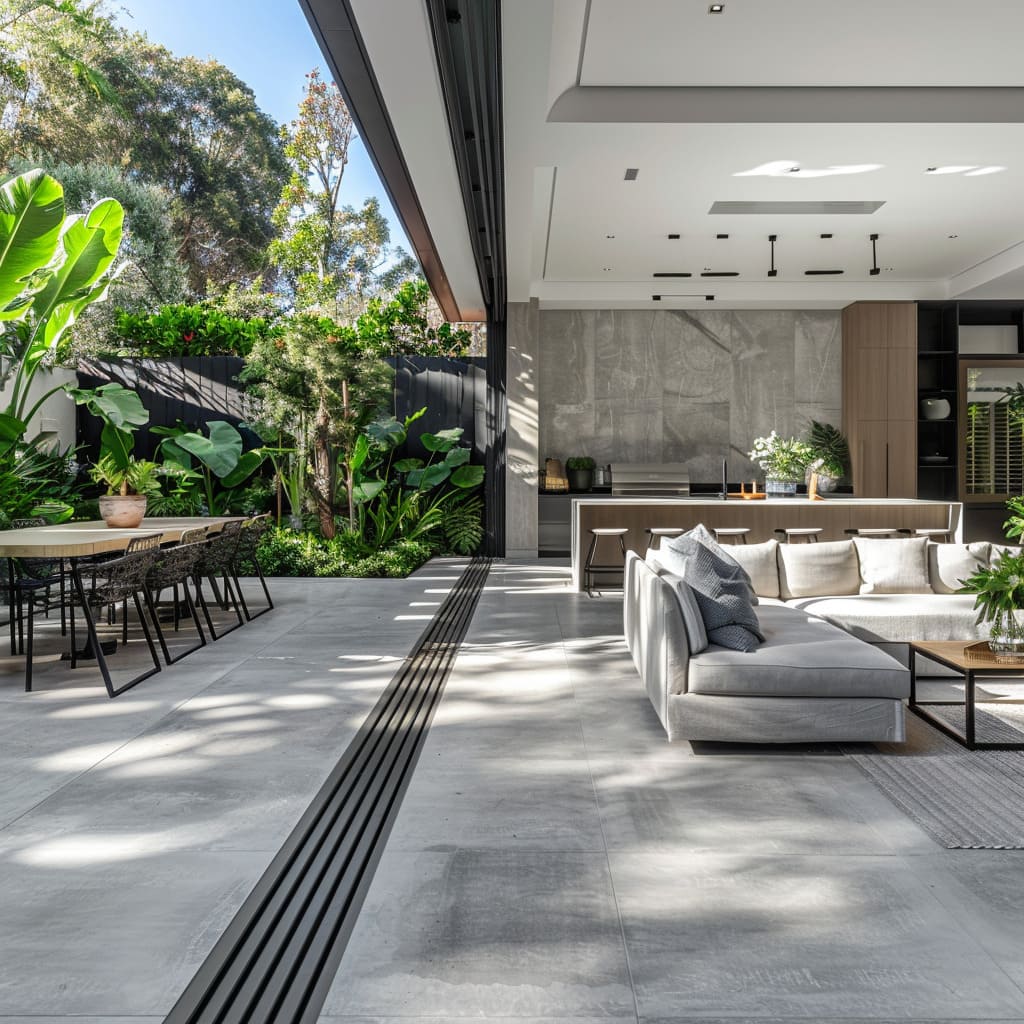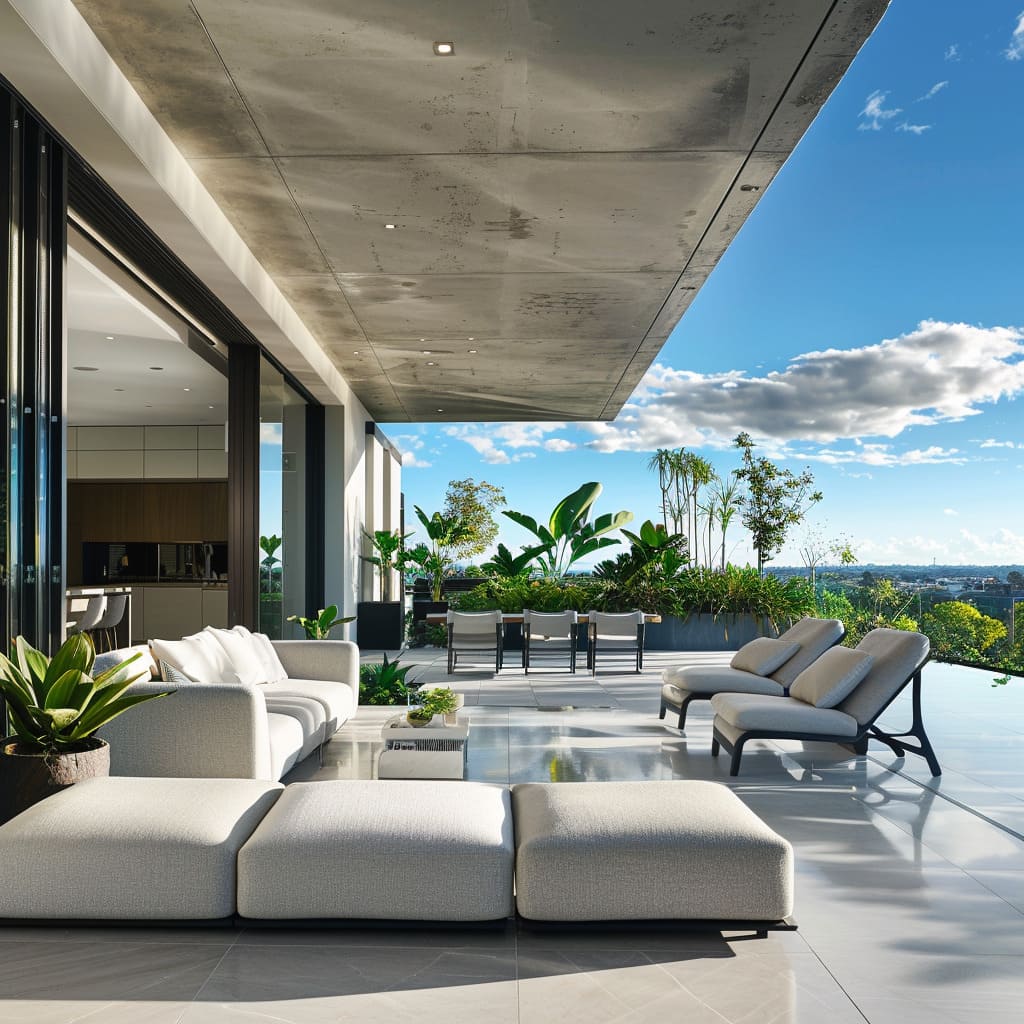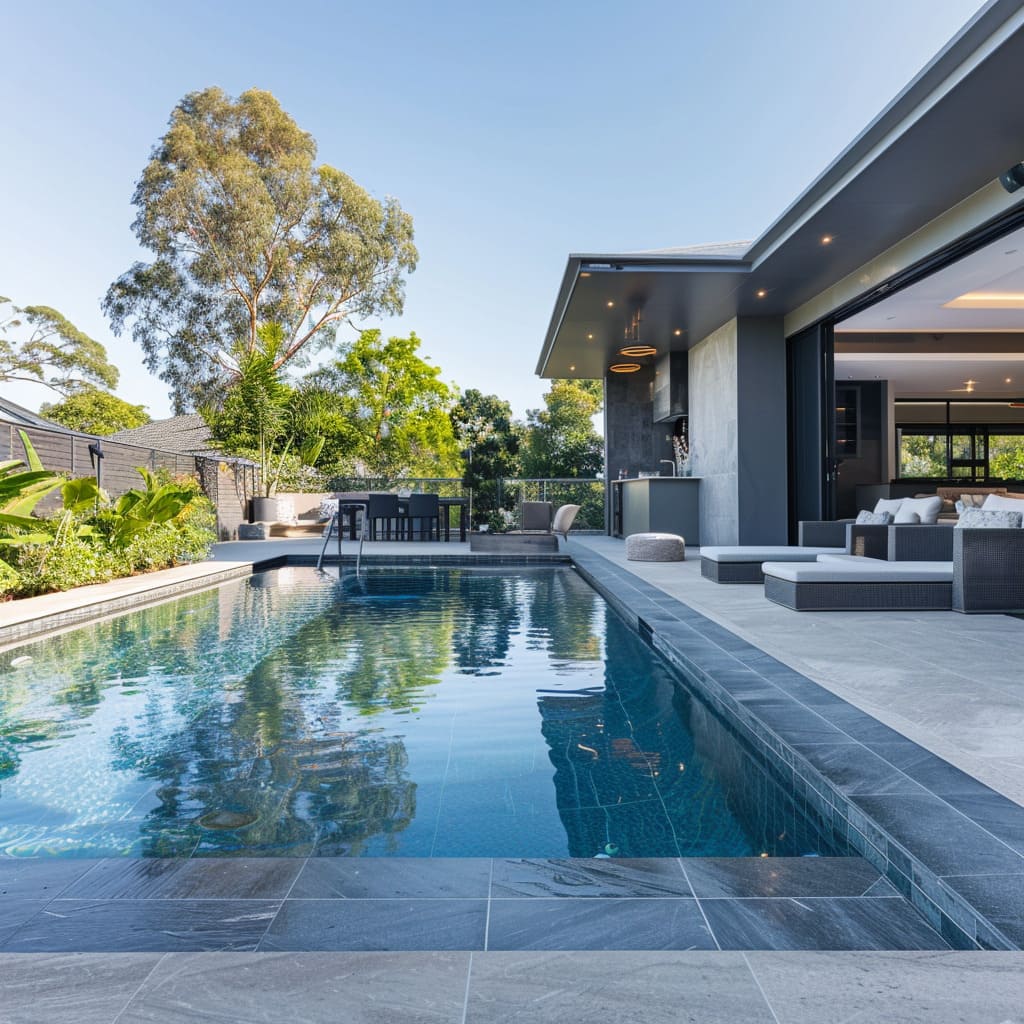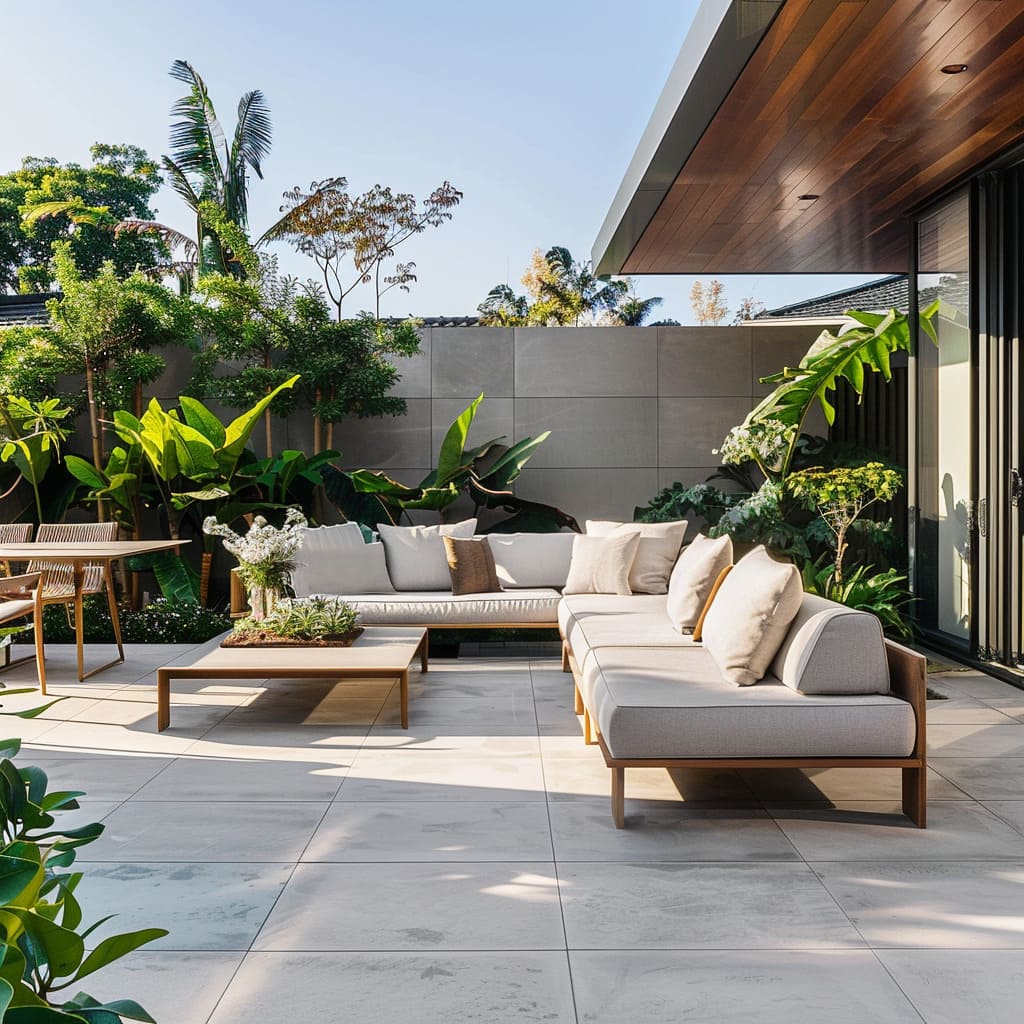
Transform your outdoor space with a simple yet powerful solution: concrete resurfacing. Imagine turning your weathered patio or walkway into a sleek, modern area that enhances your property’s appeal. With a cost-effective approach and a variety of design options, concrete resurfacing offers a transformative upgrade for your outdoor living space.
Find out how this process can elevate your home’s aesthetics and functionality with just a few steps. Ready to embark on your resurfacing journey? Consult with experienced Concreters in Newcastle to bring your vision to life with precision and expertise.
Benefits of Concrete Resurfacing
If you want to enhance the durability and appearance of your outdoor concrete surfaces, concrete resurfacing offers a cost-effective solution. This process involves applying a new layer of concrete over the existing surface, giving it a fresh look while strengthening its structure.
One of the key benefits of concrete resurfacing is its ability to cover up imperfections such as cracks, stains, or discoloration, providing a smooth and uniform finish. By rejuvenating your outdoor concrete areas through resurfacing, you can greatly extend their lifespan, saving you money on expensive repairs or replacements in the long run.
Furthermore, concrete resurfacing allows for endless customization options. You can choose from a variety of colors, patterns, and textures to create a unique and personalized look for your outdoor space. Whether you prefer a sleek modern design or a more traditional aesthetic, concrete resurfacing can help you achieve the desired style.
With minimal maintenance requirements and increased resistance to wear and tear, resurfaced concrete surfaces won’t only enhance the visual appeal of your outdoor areas but also provide long-lasting functionality.


Assessing Your Outdoor Space
To evaluate your outdoor space effectively before proceeding with concrete resurfacing, consider its current condition and usage requirements. Take note of any cracks, stains, or uneven surfaces on your existing concrete. These imperfections will impact the resurfacing process and should be addressed accordingly.
Assess the overall size and layout of your outdoor area to determine the scope of the project. Think about how you currently use the space and if any specific areas require more durability or slip resistance.
Additionally, consider factors such as sunlight exposure, climate conditions, and the surrounding landscape. These elements can influence the type of resurfacing materials that will best suit your outdoor space. Take into account your personal style preferences and desired aesthetic outcomes. Whether you prefer a sleek modern look or a more natural finish, understanding your design goals will help guide the resurfacing process.




Choosing the Right Resurfacing Materials
Consider the specific requirements of your outdoor space when selecting the appropriate resurfacing materials. For areas that are exposed to high foot traffic, such as patios or driveways, durable materials like stamped concrete or exposed aggregate are ideal choices. Stamped concrete offers a range of patterns and textures, while exposed aggregate provides a slip-resistant surface.
If you desire a more decorative touch for a pool deck or garden pathway, decorative overlays with various colors and designs can enhance the aesthetic appeal of the space.
For spaces prone to moisture, like pool decks or outdoor kitchens, it’s important to choose materials with good water resistance. Epoxy coatings or polymer overlays are excellent options as they create a waterproof barrier, preventing water damage and enhancing longevity.
Additionally, for areas with extreme weather conditions, such as hot summers or cold winters, it’s advisable to opt for materials that can withstand temperature fluctuations without cracking or fading. By considering these factors, you can select the right resurfacing materials that won’t only enhance the appearance of your outdoor space but also promote durability and longevity.


Preparing the Surface for Resurfacing
Wondering how to properly prepare the surface for resurfacing your outdoor space with concrete?
The first step is to thoroughly clean the existing concrete surface. Remove any dirt, debris, or grease using a pressure washer or a stiff-bristled brush. Pay special attention to any cracks or uneven areas, as these will need to be addressed before resurfacing.
Next, repair any cracks or damage in the concrete. Use a concrete patching compound to fill in cracks and holes, and make sure to smooth out the surface for a seamless finish. Allow ample time for the patching compound to cure before moving on to the next steps.
After repairing the surface, it’s crucial to roughen up the existing concrete to guarantee proper adhesion of the overlay. This can be done using a concrete grinder or shot blaster to create a rough texture that will help the new overlay bond securely.
Applying the Concrete Overlay
After preparing the surface for resurfacing by cleaning, repairing, and roughening up the existing concrete, the next step involves applying the concrete overlay. This overlay serves as a thin layer of specialized concrete that will rejuvenate the appearance of your outdoor space.
Firstly, make sure the surface is damp but free of standing water before applying the overlay. Then, using a trowel, spread the overlay material evenly over the concrete. Work methodically, starting from one corner and moving towards the opposite end to guarantee a consistent application.
Smooth out the overlay by gently pressing and leveling it with the trowel. Ensure the overlay is of uniform thickness throughout the area. Consider adding texture or patterns during this step if desired.
Allow the overlay to dry according to the manufacturer’s instructions. This curing time is essential to ensure a durable and long-lasting finish. Once dry, your outdoor space will be one step closer to its fabulous transformation.


Adding Decorative Finishes
Enhance the visual appeal of your outdoor space by incorporating decorative finishes onto the cured concrete overlay. Adding decorative finishes to your concrete resurfacing project can truly elevate the overall look of your outdoor area. Whether you prefer a classic look or a more modern aesthetic, there are various decorative finishes to choose from that can suit your style and preferences.
Consider the following popular decorative finishes for your concrete resurfacing project:
| Finish Type | Description |
| Stamped Concrete | Mimics the look of brick, stone, or other patterns. Provides a textured finish. |
| Stained Concrete | Adds color and depth to the concrete surface. Available in a variety of hues and tones. |
| Exposed Aggregate | Reveals the natural beauty of stones, pebbles, or glass within the concrete. Provides a unique and textured appearance. |
Sealing and Protecting the Surface
To ensure the longevity and durability of your concrete resurfacing project, sealing and protecting the surface is vital. Without proper sealing, your newly resurfaced concrete may be vulnerable to damage from weather elements, stains, and general wear and tear.
Here are some key reasons why sealing and protecting the surface is essential:
- Prevents Water Damage: Sealing your concrete surface helps to repel water and moisture, preventing cracks and deterioration over time.
- Enhances Durability: A protective sealant acts as a barrier against oil spills, chemicals, and other substances that can damage the concrete.
- Maintains Aesthetic Appeal: Sealing not only protects but also enhances the appearance of your concrete surface, keeping it looking fresh and vibrant for years to come.


Maintenance Tips for Longevity
Regularly cleaning and inspecting your resurfaced concrete is crucial for long-lasting results. Sweeping the surface with a broom or leaf blower to remove debris and dirt is a simple yet effective way to prevent buildup that can degrade the concrete over time. For more stubborn stains, gentle pressure washing can help keep the surface looking fresh. Be cautious not to use harsh chemicals or high-pressure settings that could damage the concrete.
Periodically inspecting your concrete surface for any signs of wear and tear, such as cracks or chips, is vital. Addressing these issues promptly can prevent them from becoming larger problems that require more extensive repairs. In colder climates, it’s important to shovel snow promptly and avoid using de-icing chemicals that can harm the concrete. Additionally, consider applying a fresh coat of sealant every few years to maintain the durability and appearance of your resurfaced concrete.


Showcasing Your Transformed Outdoor Space
When presenting your transformed outdoor space, consider highlighting its unique features and functionality to make a lasting impression. Start by showcasing the areas that underwent concrete resurfacing, emphasizing the seamless finish and updated look. Draw attention to any custom designs or patterns that were incorporated into the concrete to add a touch of personalization.
Additionally, focus on the practical aspects of the space, such as increased durability and improved safety, to demonstrate the value of the renovation.
- Highlight the modern aesthetic achieved through concrete resurfacing.
- Showcase any special decorative elements or color choices that enhance the overall appeal.
- Emphasize the low maintenance requirements and long-term cost-effectiveness of the transformed outdoor space.
Conclusion
Step into your newly transformed outdoor oasis, where drab has been replaced with fab. Concrete resurfacing has revitalized your space, turning it into a durable and stylish sanctuary.
With its customized designs, enhanced durability, and minimal maintenance requirements, your outdoor area is now a show-stopping masterpiece.
So sit back, relax, and enjoy the beauty and value that concrete resurfacing has brought to your property.
